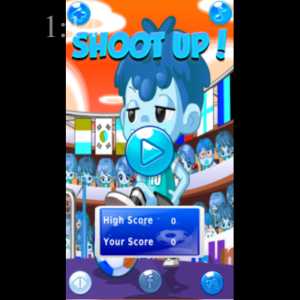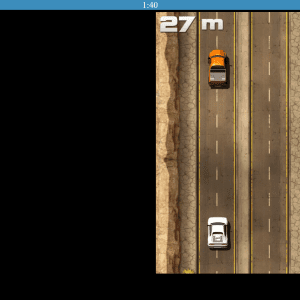React
React is the most well known JavaScript front-end structure being used today. It’s utilized by both laid out organizations and new businesses.
React was delivered by Facebook in 2013, they actually use it today for the vast majority of their applications. In the event that you’re new to react, this article will assist with acquainting you with the rudiments.
React utilized for

React is a JavaScript library for making UIs. The following are three spots you’ll find it being utilized:
Web improvement
This is where React started out and where you’ll find it utilized most frequently. React is part based. An illustration of a part could be a structure or even a structure field or button on a site. In React, you develop total applications utilizing parts like these by settling them.
Parts in React can deal with their own state and impart that state to kid parts. By “state,” we mean the information that populates the web application.
A model would be a client profile structure that holds the condition of the client’s information, including first name, last name, and different qualities. This structure part would have settled field parts that it passes its state to populate them.
Parts in React are likewise reusable, and that implies you can involve one button part for each button on your site. Assuming you want the button to appear to be unique, you can basically change its style.
Versatile application advancement
React Local is a JavaScript system that utilizations React. With React Local, engineers can apply online React standards to making versatile applications for Android and iOS. Here, React is utilized to associate the portable UI of the application to the telephone’s working framework.
Work area application improvement
Engineers can likewise utilize React with Electron, one more JavaScript library, to make cross-stage work area applications. Some applications you might realize about that are worked with Electron incorporate Visual Studio Code, Slack, Skype, Friction, WhatsApp, and WordPress Work area.
React 1.80V
Our most recent significant variant incorporates out-of-the-container upgrades like programmed clustering, new APIs like startTransition, and streaming server-side delivering with help for Anticipation.
A significant number of the elements in React 18 are based on top of our new simultaneous renderer, an in the background change that opens strong new capacities. Simultaneous React is select in — it’s possibly empowered when you utilize a simultaneous component — however we figure it will hugely affect the manner in which individuals fabricate applications.
We’ve gone through years exploring and creating support for simultaneousness in React, and we’ve taken additional consideration to give a continuous reception way to existing clients. The previous summer, we framed the React 18 Working Gathering to assemble criticism from specialists locally and guarantee a smooth overhaul insight for the whole React biological system.
In the event that you missed it, we shared a ton of this vision at React Conf 2021:
In the featured discussion, we clear up how React 18 squeezes into our central goal for make it simple for engineers to fabricate extraordinary client encounters
Shruti Kapoor showed how to utilize the new highlights in React 18
Shaundai Individual provided us with an outline of streaming server delivering with Tension
Concurrent React
The main expansion in React 18 is something we genuinely want to believe that you never need to contemplate: simultaneousness. We think this is to a great extent valid for application designers, however the story might be a smidgen more convoluted for library maintainers.
Simultaneousness isn’t an element, in essence. Another in the background system empowers React to set up various renditions of your UI simultaneously. You can consider simultaneousness an execution detail — it’s important due to the elements that it opens. React involves refined procedures in its inward execution, similar to need lines and different buffering. However, you won’t see those ideas anyplace in our public APIs.
At the point when we plan APIs, we attempt to conceal execution subtleties from engineers. As a React designer, you center around what you need the client experience to seem to be, and React handles how to convey that experience. So we don’t anticipate that React designers should know how simultaneousness functions in the engine.
Notwithstanding, Simultaneous React is a higher priority than a common execution detail — it’s a fundamental update to React’s center delivering model. So while it’s not really essential to know how simultaneousness functions, it very well might merit understanding what it is at a significant level.
A vital property of Simultaneous React is that delivering is interruptible. At the point when you first move up to React 18, preceding adding any simultaneous elements, refreshes are delivered equivalent to in past forms of React — in a solitary, continuous, coordinated exchange. With coordinated delivering, when an update begins delivering, nothing can hinder it until the client can see the outcome on screen.
In a simultaneous render, this isn’t generally the situation. React may begin delivering an update, stop in the center, then, at that point, go on later. It might try and leave an in-progress render through and through. React ensures that the UI will seem reliable regardless of whether a render is interfered. To do this, it stands by to perform DOM changes until the end, when the whole tree has been assessed. With this capacity, React can get ready new screens behind the scenes without impeding the fundamental string. This implies the UI can answer promptly to client input regardless of whether it’s in a huge delivering task, making a liquid client experience.
Another model is reusable state. Simultaneous React can eliminate areas of the UI from the screen, then, at that point, add them back later while reusing the past state. For instance, when a client tabs from a screen and back, React ought to have the option to reestablish the past screen in a similar state it was in previously. In an impending minor, we’re wanting to add another part called <Offscreen> that executes this example. Additionally, you’ll have the option to utilize Offscreen to plan new UI behind the scenes so that it’s prepared before the client uncovers it.
Simultaneous delivering is a strong new device in React and the vast majority of our new highlights are worked to exploit it, including Tension, changes, and streaming server delivering. In any case, React 18 is only the start of what we expect to expand on this new establishment.







